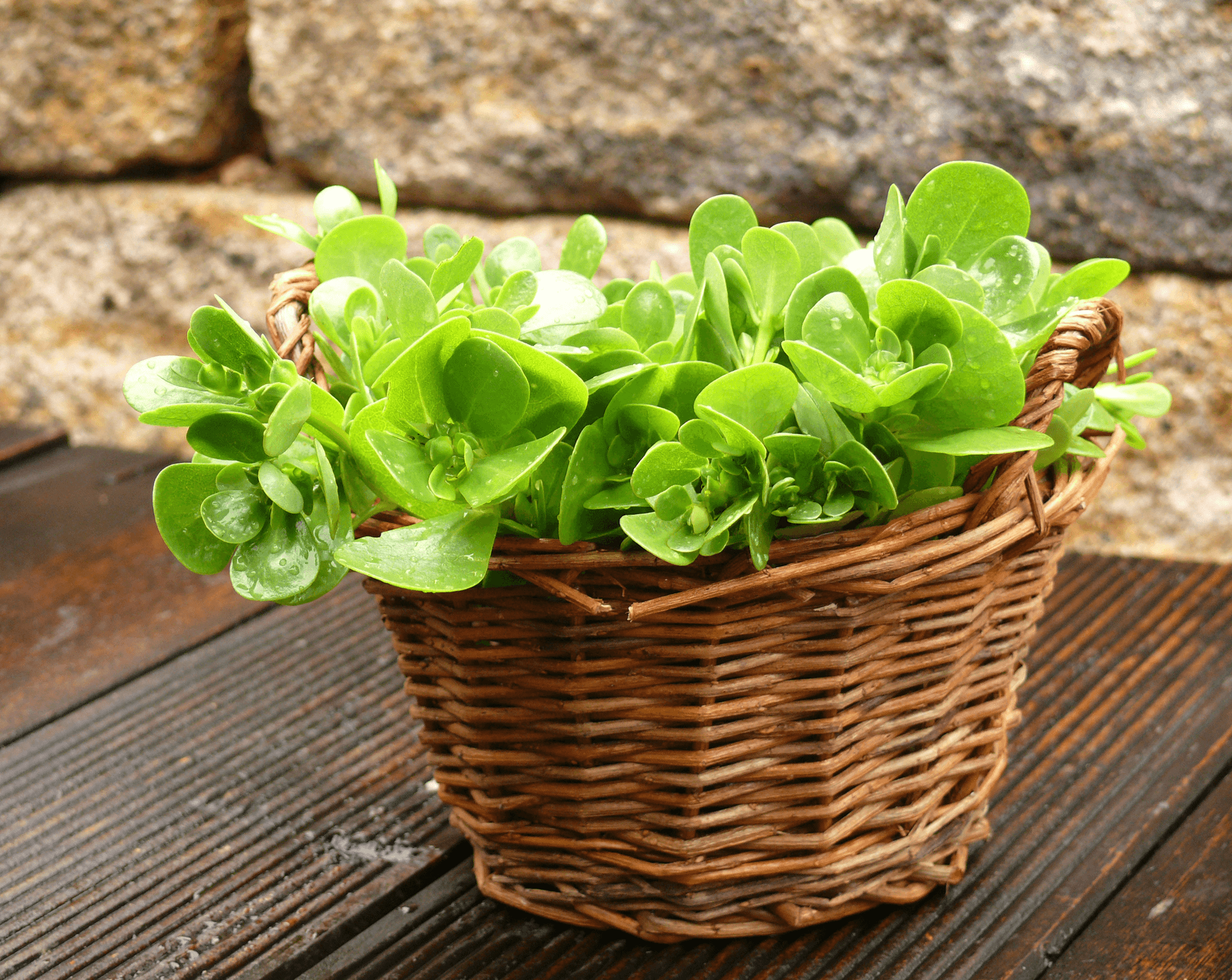Purslane may be the coolest vegetable that hasn’t made its way into your salad bowl yet. It is not easy to find, so don’t be discouraged if you can’t find it right away. I came across it last summer at my farmers’ market in Montgomery, NJ. Michael Pollan, in his book “In Defense of Food” considers it a power food.
Until recently, purslane was considered a weed! It belongs to the “succulent” family and its little leaves have a shiny and fat appearance typical to this category of plants. It is widely eaten throughout Europe, India, the Middle East and Africa. In the US, it is still treated like any other invasive plant in the garden.
It has a slightly sour, lemony and peppery taste that makes it an interesting addition to the salad bowl. It also adds a creamy texture to smoothies because it contains mucilages. The entire plant is somewhat crunchy. The leaves, stems, flowers and seeds are all edible.
I get rid of some of the larger end stems when making a salad or smoothie, especially from the larger plants. I keep the leaves and smaller, finer upper stems. Some people only consume the leaves but that makes it a very expensive salad!
Purslane can also be added to soups and stews. It is eaten cooked or raw. Because it is a survivor, it will stay fresh in your fridge for almost a week. This vegetable is extremely high in omega-3 fatty acids.
Purslane contains 0.9mg of omega-3 fatty acids per 100mg (+/- 3oz). This is excellent and provides a wonderful source of omega-3 for vegetarians. 3oz of salmon will bring you around 1.5mg or less depending on the species.
Purslane offers significant amounts of fiber, vitamins A, C, B family, iron, magnesium, manganese, potassium, calcium, and copper. Furthermore, it contains powerful anti-oxidants such as betalain, beta-cyanine and beta-xanthine to combat free radicals. I like all the details about content in this article.
There is only one caution. It contains high levels of oxalic acid, like spinach. This can promote the formation of oxalates in the body, which in turn can form kidney stones. The good news is that when you boil it first, you can get rid of most of the oxalic acid.
There are many ways to prepare purslane. You can add feta, garbanzo beans, fennel, or cherry tomatoes. I created this salad recipe based on an experiment with lemon and oranges. I also wanted to try a new lemony pepper mix I had bought at The Savory Spice Shop in Princeton, NJ.
You will need for 6 servings:
– A pound of purslane salad (+/- 3oz per person)
– 2 medium onions
– 2 small oranges or a very large one. Must be very juicy.
– 8 large leaves of basil
– 2 to 3 sprigs of flat parsley
– 5-6 tbsps. olive oil
– 2 tbsps. fresh lemon juice
– “Pyramid Peak Lemon Pepper” mix that I buy at the Savory Spice Shop in Princeton, NJ.
If you cannot find this, create your own mixture by grating one large lemon, pepper and salt to your taste and combining with 1 clove of garlic. It gives a little zing to the vinaigrette.
Instructions:
– Rinse the purslane well as it is a wild plant. Get rid of the harder stems. Cut in branches
– Chop the onion in very small pieces
– Juice one large lemon
– Chap the parsley and basil very finely
– Peel the orange(s) and get rid of all membranes. Cut in small pieces.
– Mix the olive oil, lemon juice and lemony pepper mixture. I will usually add a good tbsp. You may be less generous, if you find the mixture too peppery.
Serve it as a starter or with steak, chicken, shrimp… You can add anything you like! It also can be mixed with other salads such as arugula or lettuce. In fact it blends very well with almost anything. Enjoy!
